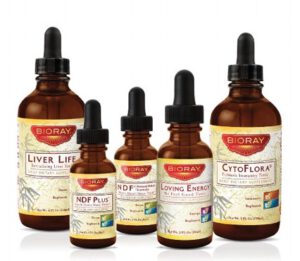Gums Hurt is a comprehensive guide to understanding the common causes of gum discomfort and the strategies to relieve it. It covers a wide range of topics, from the causes of gum pain to the best treatments and remedies. It also provides helpful tips on how to prevent gum pain in the future. Whether you are experiencing mild gum discomfort or severe pain, this guide will provide you with the information you need to find relief.
What Causes Gums to Hurt and How to Find Relief
Gums can become sore and painful for a variety of reasons. Common causes of gum pain include gum disease, gingivitis, abscesses, and trauma. In some cases, the pain may be caused by a systemic condition such as diabetes or an autoimmune disorder.
Gum Disease
Gum disease, also known as periodontal disease, is an infection of the gums caused by bacteria. It is the leading cause of gum pain and can be caused by poor oral hygiene, smoking, or certain medications. Symptoms of gum disease include red, swollen, and tender gums, bleeding gums, and bad breath.
Gingivitis
Gingivitis is an inflammation of the gums caused by plaque buildup. It is the earliest stage of gum disease and is characterized by red, swollen, and tender gums. It can also cause bleeding when brushing or flossing.
Abscesses
An abscess is a pocket of pus that forms in the gums due to an infection. It is usually caused by bacteria and can cause severe pain, swelling, and redness.
Trauma
Trauma to the gums can cause pain and swelling. This can be caused by dental procedures, biting or chewing hard foods, or brushing too hard.
Systemic Conditions
In some cases, gum pain can be caused by a systemic condition such as diabetes or an autoimmune disorder. These conditions can cause inflammation of the gums and can make them more susceptible to infection.
Finding Relief
The best way to find relief from gum pain is to treat the underlying cause. If the pain is caused by gum disease, gingivitis, or an abscess, your dentist may recommend a professional cleaning and/or antibiotics. If the pain is caused by trauma, it may be necessary to avoid certain foods or activities that can cause further trauma. If the pain is caused by a systemic condition, it is important to manage the condition to reduce inflammation and prevent infection.
In addition to treating the underlying cause, there are several home remedies that can help relieve gum pain. These include rinsing with warm salt water, applying a cold compress, and taking over-the-counter pain relievers.
Gum pain can be uncomfortable and disruptive, but it is important to seek treatment to prevent further damage to the gums. If you are experiencing gum pain, it is important to see your dentist to determine the cause and find relief.
Understanding the Different Types of Gum Pain and How to Treat Them
Gum pain can be a common and uncomfortable experience. It can range from mild to severe and can be caused by a variety of factors. Understanding the different types of gum pain and how to treat them can help you find relief.
The first type of gum pain is caused by inflammation. This type of pain is usually caused by gum disease, such as gingivitis or periodontitis. Symptoms of this type of gum pain include redness, swelling, and tenderness of the gums. Treatment for this type of gum pain typically involves brushing and flossing regularly, using an antiseptic mouthwash, and visiting your dentist for a professional cleaning.
The second type of gum pain is caused by an infection. This type of pain is usually caused by an abscessed tooth or an infection in the gums. Symptoms of this type of gum pain include severe pain, swelling, and pus. Treatment for this type of gum pain typically involves antibiotics and possibly a root canal.
The third type of gum pain is caused by trauma. This type of pain is usually caused by an injury to the gums, such as biting or chewing on something hard. Symptoms of this type of gum pain include pain, swelling, and bleeding. Treatment for this type of gum pain typically involves cleaning the area with warm salt water and applying a cold compress to reduce swelling.
No matter what type of gum pain you are experiencing, it is important to seek medical attention if the pain persists or worsens. Your dentist can help diagnose the cause of your gum pain and provide the appropriate treatment. With the right care, you can find relief from your gum pain and get back to enjoying life.
Conclusion
Gums Hurt is a common problem that can be caused by a variety of factors. Fortunately, there are many strategies that can be used to help relieve gum discomfort. These strategies include brushing and flossing regularly, avoiding sugary and acidic foods, using a soft-bristled toothbrush, and using a mouthwash that contains fluoride. Additionally, it is important to visit a dentist regularly to ensure that any underlying issues are addressed. With the right strategies and care, gum discomfort can be managed and prevented.
 Excessive heavy metal exposure can be hazardous to the human body. Some foods and drugs can help the body remove heavy metals. Such substances are used for this purpose as
Excessive heavy metal exposure can be hazardous to the human body. Some foods and drugs can help the body remove heavy metals. Such substances are used for this purpose as